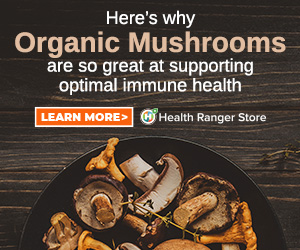
Diabetes 101: Defining the Disease and How to Test for It (Part 1 of 4)
Wednesday, September 03, 2008 by: E.L. West
Tags: diabetes, health news, Natural News
- Newly released JFK files reveal Pentagon's role in creating Lyme disease and covid in the same lab
- Here are TEN all-natural ways to protect your garden without using harmful chemicals
- Ginseng's hidden anti-aging power: How compound K is rewriting the rules of skincare
- “Endgame: The Hidden Agenda 21” unveils a world of conspiracy and control
- L.A.'s rebuilding nightmare: Only 4 permits issued after fire destroys 6,000 homes
- Scientists demand FDA withdraw mRNA COVID vaccines amid contamination and gene therapy concerns
- Senate Democrats deny censorship industrial complex existed, defend government's role in silencing dissent
- Dr. Suzanne Humphries makes bombshell appearance on Joe Rogan podcast, exposing vaccine industry deception back to POLIOMYELITIS
- “The shame of Minnesota”: Somali immigrants behind $250 million child nutrition fraud in largest COVID-era scam
- Former Congresswoman exposes CCP's deep infiltration of California through universities, ports, and fentanyl
- PROCESSED TABLE SALT in foods found to fuel depression
- Despite surge in MMR vaccination in Texas, measles outbreaks continue: Is VACCINE SHEDDING fueling the spread?
- Chewing gum's dirty secret: How your daily habit could be flooding your body with microplastics
- “Independent” anti-Russia outlet MEDUZA faces COLLAPSE as US funding dries up
- BPA: The hidden hormone disruptor sabotaging your health - and how to fight back
- Embracing the wild: A deep dive into Jim Cobb’s “Backwoods Survival Guide”
- The hidden battle in your glass: How A1 and A2 milk could shape your health
- Catastrophic 7.7 earthquake devastates Myanmar and Thailand; death toll could reach 100,000
- Newly released JFK files reveal Pentagon's role in creating Lyme disease and covid in the same lab
- Analysis: The coming economic collapse, a mass uprising and Trump's three secret weapons to halt the growing revolt
- Festive flavors: The sweet history, nutritional profile and health benefits of pecan pie
- Elon Musk: Aliens could be here on Earth RIGHT NOW
- Trump reverses course on Gaza plan, says “nobody is expelling Palestinians”
- Big Pharma's $8 Billion bribery scheme exposed: how doctors are pushed to prescribe junk science, not heal
- Boys are back in town: Trump’s patriotic alpha crew takes the wheel while toxic females ride in the backseat
- Reclaim your health: How midlife exercise reverses years of inactivity
- A lack of integrity in Academia: Harvard professor found GUILTY of fraudulent research to promote CRT theory
- Survival 101: Effective EMF blocking techniques
- EPA advisor admits the agency is funneling billions to climate groups ahead of Trump’s return to White House
- Dr. Mike Yeadon releases 15-minute testimony - WATCH - about genocidal intent of COVID “vaccines”
- 5 Simple steps to boost your brainpower: How to strengthen executive function in a distracted world
- Florida takes a stand: DeSantis proposes permanent ban on mRNA vaccine mandates
- Sugarcane extract superior to cholesterol-lowering drugs?
- Mike Adams Sermon 66: God will DESTROY ISRAEL for its wickedness
- Pilots report mysterious lights 'moving at extreme speeds' across Oregon skies
- Space war brewing? Russia threatens to destroy Starlink satellites
- EPA advisor admits the agency is funneling billions to climate groups ahead of Trump’s return to White House
- California's social media censorship law struck down: A victory for free speech or a threat to online safety?
- The Health Ranger releases “Vaccine Zombie” song and music video, using AI-animated zombies for the music video
- Dr. Mike Yeadon releases 15-minute testimony - WATCH - about genocidal intent of COVID “vaccines”
- The pandemic as a tool for INDOCTRINATION: Understanding “The Indoctrinated Brain” by Dr. Michael Nehls
- Newly released JFK files reveal Pentagon's role in creating Lyme disease and covid in the same lab
- Florida takes a stand: DeSantis proposes permanent ban on mRNA vaccine mandates
- Mike Adams releases country western hit single: Goin’ Back in Time is Comin’ Home
- Mike Adams releases music poetry sensation: A Child of God
- “Why we influenced the 2020 elections”: Facebook files reveal the coordinated effort to bury the Hunter Biden laptop story
- Unpacking the Lies That We’ve Been Fed – new song and music video released by Mike Adams, the Health Ranger
- RFK Jr. clears key hurdle: Sen. Susan Collins backs controversial HHS nominee, signaling a new era for health policy
- Mike Adams releases new song and music video: Nothing More Disgusting Than a Globalist
- Michigan sheriff announces criminal investigation into 2020 election crimes, Dominion Voting Systems
- Israeli soldiers accused of even more torture and abuse in the West Bank
- Migrants are taking advantage of recent hurricanes to scam residents and loot their homes
- House Intelligence Committee calls for the ARREST and PROSECUTION of Dr. Anthony Fauci
- Rep. Nancy Mace introduces bill to ban biological males from female facilities on federal property
- Red Cross issues warning to stop blood plasma donations from vaccinated people
- Scientists confirm: GENIUS brain function can be spontaneously unleashed in humans without any apparent cause
- EPA advisor admits the agency is funneling billions to climate groups ahead of Trump’s return to White House
- HYSSOP: What research reveals about the health benefits of this ancient holy herb
- Two containers with completed ballots fall out of truck in Florida
- Fully vaccinated about to see “tsunami” of illness and death, warns virologist
- Global leaders unite to clamp down on “misinformation” with UN-backed Cascais Declaration
- BREAKING: 2025 NDAA authorizes mandatory military draft of WOMEN across America… as Pentagon pursues global NUCLEAR war with both Russia and China at the same time
- Michael Yon warns of a ZIONIST TAKEOVER in Trump’s second administration
- BOMBSHELL: DNA testing kits are a SCAM to develop ethnic-specific bioweapons
- Ozempic and Wegovy weight loss drugs are injectable LIZARD VENOM PEPTIDES that may unleash a devastating wave of organ failure… side effects align with symptoms of SNAKE BITES
- Israeli soldiers accused of even more torture and abuse in the West Bank
- These 13 countries just signed an agreement to engineer a global FAMINE by destroying food supply
- NASA admits that climate change occurs because of changes in Earth’s solar orbit, and NOT because of SUVs and fossil fuels
- RFK Jr. clears key hurdle: Sen. Susan Collins backs controversial HHS nominee, signaling a new era for health policy
- Sermon 30: How Jesus reveals Caesar’s FAKE CURRENCY and FALSE AUTHORITY
- Coriander seeds: Ancient medicine backed by modern science
- Arizona officials claim Maricopa County needs 10-13 days to tabulate results of the election
Diabetes and Insulin
Though many Americans suffer from diabetes (according to the Centers for Disease Control, approximately 15.8 million in 2005), comparatively few know about the underlying cause and the relationship between diabetes and insulin. Firstly, to accurately address the diabetes issue, a description of diabetes and insulin is needed. Insulin is a hormone secreted by the pancreas and its primary function is to lower blood glucose (sugar) levels as needed along with maintaining the balance of lipids and amino acids in blood. When simple carbohydrates are consumed, they are easily broken down, and blood glucose rises. When glucose levels rise, insulin is released by the pancreas to lower said glucose levels (Powers, R.). After the glucose levels have returned to normal, insulin levels in the blood are lowered as well (Biology 1073).
Diabetes mellitus (its technical name) is a disorder of inappropriate blood-insulin levels and is divided into to two sub-groups: type I and type II (Biology, 1073 and Contemporary Nutrition, 126). Type I diabetes, according to Biology, is characterized by the pancreas being attacked by immune cells (1073). Subsequently, there is not enough insulin circulating in the blood, and blood glucose is not utilized by cells but remains circulating in the blood at very high levels (Biology 1073). This is problematic because cells are not able to garner enough of the energy needed to perform necessary actions. If left untreated, type 1 diabetes mellitus can be fatal.
In type II diabetes, the pancreas is not being attacked by immune cells; rather, the cells lose their ability to respond to insulin. This form of diabetes mellitus is more prevalent in America than type I diabetes, being estimated to afflict approximately 10-15 million Americans (Biology 1073). Again, if this disorder is left untreated, the results can be fatal because of dangerously high levels of insulin and glucose in the blood.
Insulin Resistance
Insulin resistance comes into the picture with type II diabetes and only this form. Gilesa Wilcox et al, in her article Insulin and Insulin Resistance defines insulin resistance in this manner, "Insulin resistance is defined where a normal or elevated insulin level produces an attenuated biological response (2); classically this refers to impaired sensitivity to insulin mediated glucose disposal (3)." In more plain terms, insulin resistance is the loss of responsiveness that occurs on the insulin-receptor of a cell (particularly liver, muscle and fat cells, with the liver losing sensitivity first, then the muscle and then the fat cells); this leads to type II diabetes. Insulin resistance can be detected in three ways: fasting glucose test, glucose tolerance test, and the euglycemic clamp test. First, to determine whether or not someone is afflicted with insulin resistance, according to the National Diabetes Information Clearinghouse (NDIC), a physician will examine a patient's fasting blood glucose levels. A fasting blood glucose level higher than 100-125 mg/dL is not indicative of diabetes, but it can be indicative of insulin resistance and is above normal levels.
The second test is the glucose tolerance test. This test measures blood glucose levels after an overnight fast and then again two hours later measuring blood glucose levels after something sugary (typically some kind of juice) has been consumed. A blood glucose reading between 140-199mg/dL is quite high, still not indicative of diabetes, but high enough to engender concern that left untreated, the patient will develop diabetes (Powers, R.).
The third testing measure is the most accurate way to determine insulin resistance: the euglycemic clamp test. Though it is the most accurate measure, it is also the most inconvenient measure. According to NDIC, the euglycemic clamp test is employed by investigators to more accurately measure glucose metabolism. In the euglycemic clamp test, "...insulin is infused to maintain a constant plasma insulin level. Glucose is then infused and, as the plasma level falls because of the action of insulin, more glucose is added to maintain a steady level. The amount of glucose infused over time provides a measure of insulin resistance," (Goutham Rao, M.D.) It is not commonly used in doctors' offices due to its expense, but is worth mentioning because, as stated before, it is the most accurate way to determine insulin resistance status (NDIC).
These tests, though highly accurate in detecting insulin resistance, still are not totally effective in concretely diagnosing the condition. Furthermore, pre-diabetes (as it is also known) is typically asymptomatic making it even more difficult to detect; however, severe cases of insulin resistance can manifest themselves as a condition known as acanthosis nigricans. Acanthosis Nigricans is characterized by dark skin patches that form on elbows, knees, knuckles, armpits, and the neck (sometimes a dark ring around the neck or a patch on the back of the neck)(NDIC). Other than the aforementioned condition which is only seen in the most severe cases of insulin resistance, there are no apparent symptoms.
In Part 2 of this series, the causes of insulin resistance will be examined.
Sources:
1. Brooker, Rob, Eric Widmaier, Linda Grahm, Peter Stiling. Biology. New York: McGraw-
Hill, 2008. 1061-73.
2. Challem, Jack. (https://www.naturalnews.com/022638.html)
3. Glaser, Benjamin. Pub Med. (http://www.pubmedcentral.nih.gov/articlerend...)
4. Goutham, Rao. "Insulin Resistance Syndrome." American Family Physician. 63.6 (2001).
19 Mar. 2008.
5. Insulin Resistance and Pre-Diabetes. (http://diabetes.niddk.nih.gov/dm/pubs/insuli...)
6. Kahn, Barbara B., Flier, Jeffrey S. (http://www.jci.org/106/4/473?content_type=fu...)
7. Kitabchi, Abbas E., et al. (http://diabetes.diabetesjournals.org/cgi/con...)
8. Number (in Millions) of Persons with Diagnosed Diabetes, United States, 1980-2005. (http://www.cdc.gov/diabetes/statistics/prev/...)
9. Pessin, Jeffery E.; Saltiel, Alan R. (http://www.pubmedcentral.nih.gov/articlerend...)
10.Powers, Robert W. Telephone interview. 28 Feb. 2008.
11. Rosedale, Ron. Lecture. Health Institutes Boulder Fest Seminar. Aug. 1999
12. Shulman, Gerald I. (www.pubmedcentral.nih.gov/articlerender.fcgi...)
13. Wardlaw, Gordon, Anne M. Smith. Customized Contemporary Nutrition. Updated 6th ed.
New York: McGraw-Hill, 2007. 126-30.
14. Wilcox, Gilesa. "Insulin and Insulin Resistance." PubMed. 26.2 (2005). 19 Mar. 2008.
About the author
Emily West is a freelance writer that focuses on topics of natural health and sustainable food production systems. She also maintains a blog, The Wordsmith, at www.journeyoutofrabbithole.wordpress.comDiabetes at FETCH.news
Get independent news alerts on natural cures, food lab tests, cannabis medicine, science, robotics, drones, privacy and more.
Take Action: Support Natural News by linking to this article from your website
Permalink to this article:
Embed article link: (copy HTML code below):
Reprinting this article:
Non-commercial use OK, cite NaturalNews.com with clickable link.
Follow Natural News on Facebook, Twitter, Google Plus, and Pinterest
Science News & Studies
Medicine News and Information
Food News & Studies
Health News & Studies
Herbs News & Information
Pollution News & Studies
Cancer News & Studies
Climate News & Studies
Survival News & Information
Gear News & Information
News covering technology, stocks, hackers, and more



"Big Tech and mainstream media are constantly trying to silence the independent voices that dare to bring you the truth about toxic food ingredients, dangerous medications and the failed, fraudulent science of the profit-driven medical establishment.
Email is one of the best ways to make sure you stay informed, without the censorship of the tech giants (Google, Apple, Facebook, Twitter, YouTube, etc.). Stay informed and you'll even likely learn information that may help save your own life."
–The Health Ranger, Mike Adams












































